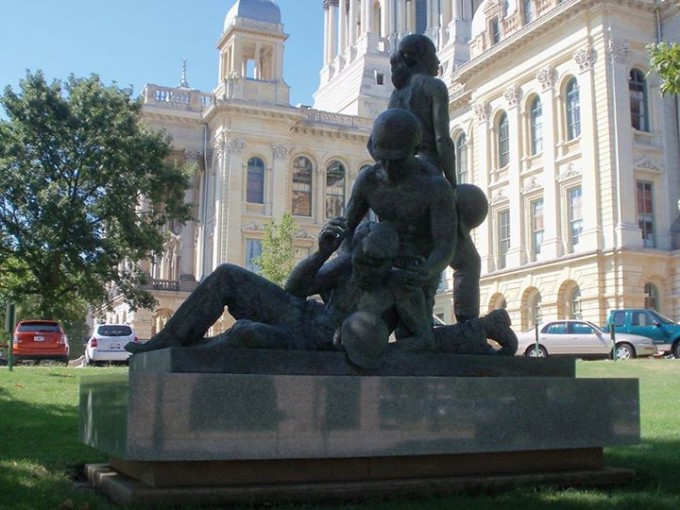
Thursday, 26 February 2015
…and that He was buried, and that He rose again the third day according to the Scriptures, 1 Corinthians 15:4
The death of Christ is confirmed in His burial, just as it was in the burial of Lazarus. The previous verse noted “that Christ died for our sins.” If this is so, then that means He died in a sinless state, because only sinless perfection can take away the sin from one who has sin. This is something that Old Testament writings implicitly demonstrate.
Babies were often sacrificed by pagan nations, and even by wayward kings of Israel, in an attempt to expiate sin. But there is a sure proof that this didn’t work; the babies remained dead. If “the wages of sin is death” as the Bible proclaims, then if a baby who was sacrificed for another’s sin was sinless, the baby would resurrect. But this doesn’t happen. Instead, they bore their own inherited sin from Adam. David notes this in the 51st Psalm –
“Behold, I was brought forth in iniquity,
And in sin my mother conceived me.” Psalm 51:5
There is no sinless perfection to be found, even in a mere babe. Thus Christ came, born of a woman, but His Father is God. Because of this, the line of sin was cut; there was no inherited sin. The God/Man was born sinless and he was born under the law. The record of the gospels shows us that He was not only born without sin, but He lived perfectly and died without sin as well. Only He then could be an acceptable sacrifice for the sins of fallen man. Again, Micah 6 shows us the unacceptable nature of offering even one’s child –
“With what shall I come before the Lord,
And bow myself before the High God?
Shall I come before Him with burnt offerings,
With calves a year old?
7 Will the Lord be pleased with thousands of rams,
Ten thousand rivers of oil?
Shall I give my firstborn for my transgression,
The fruit of my body for the sin of my soul?” Micah 6:6, 7
God would be pleased with none of those things in exchange for the sin of our soul. Burnt offerings of calves or rams are in a different category than man. Oil, even ten thousand rivers of it, cannot carry away sin. And even the “fruit” of our body, meaning our children, are unqualified because of inherited sin. But Christ could and He did. He died and “He was buried,” thus providing sure evidence for His death.
After that we are told “that He rose again the third day.” The death of Christ was a one-time-for-all-time occurrence, never to be repeated. His death was necessary to atone for our sin. However, just as the burial was sure evidence for His death, the resurrection of Christ is the sure proof that His death was sinless. If “the wages of sin is death” and Jesus had no sin of His own, then it would be impossible for Him to remain dead. Peter explains this in Acts 2, saying exactly that. Death could not hold Him because death had no jurisdiction over Him.
In approval of His sinless life, atoning death, and confirmed death through burial, God the Father raised Him from the dead. It was a one-time-and-forevermore event. The Lamb has overcome. And all of this is, as Paul again notes, according to the Scriptures. None of this was done in secret, and all of this was already anticipated by the very words which established the law that Christ came to fulfill. These things are revealed in that same law; crying out in anticipation of His fulfillment of them.
Life application: Christ died to take away our sins and to grant us eternal life. The very nature of the transaction shows that it is 1) Fully sufficient in and of itself, and 2) Eternal in nature. Trust in Christ, rest in Christ, and anticipate in your heart the soon coming again of Christ.
I am saved by the blood of Christ. Amen.
